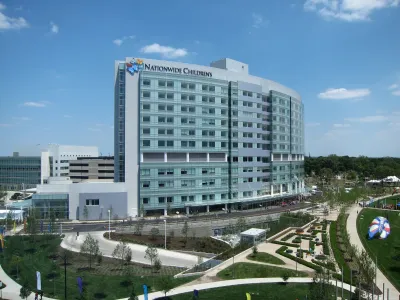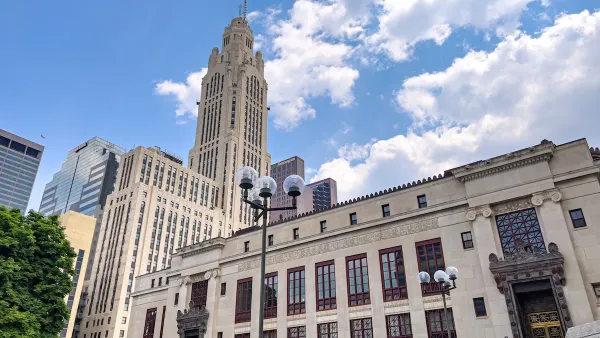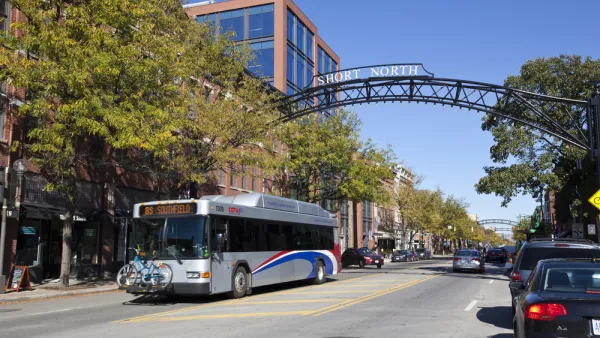A hospital in Columbus, Ohio, seeks to improve the lives of area residents by investing in the surrounding neighborhood.

Laura Bliss examines the relationships between hospitals and the communities in which they locate, with a focus on Nationwide Children’s Hospital in Columbus, Ohio. The Southern Orchards neighborhood around the hospital had been in decline for many years, and in 2008 Nationwide Children’s began investing in the community, starting with a real estate development initiative, reports Bliss:
Over the past nine years, Nationwide Children’s put $6 million into this combined effort, joining the city and other donors to [the] Healthy Neighborhoods, Healthy Families [initiative]; all told, what began as holding up its end of a tax deal became a nearly $23 million investment in 272 single-family homes and dozens of rental units around the South Side.
Bliss points out that Nationwide Children’s had incentives for investing in Southern Orchards. For one, an improved neighborhood is an employee benefit. In addition, improving the quality of life and health of area residents helps the hospital. Since it is reimbursed for each Medicaid and Medicare patient, rather than for services provided, healthier patients mean lower medical costs for the hospital.
However, the actual effects and outcomes of these investments remain somewhat unclear, reports Bliss. One of Nationwide Children’s next goals is getting a better sense of how improvements in the neighborhood have affected the health of children. “Over the next three years, the hospital will try to assess this by a number of metrics, including readmission rates, the number of emergency room visits, inpatient days, and the particular health issues kids from the neighborhood are bringing in,” says Bliss.
Bliss also says that development investments by Nationwide Children’s and hospitals in other cities have seen their fair share of controversies. In some places, projects have moved too slowly or the promised community benefits never materialized. Concerns about gentrification and displacement have also challenged development efforts. Advocates and researchers say measuring displacement of residents, developing strategies to prevent it, and figuring out ways to reconnect with displaced people should be goals at the forefront of future investment activities.
FULL STORY: When a Hospital Plays Housing Developer

Analysis: Cybertruck Fatality Rate Far Exceeds That of Ford Pinto
The Tesla Cybertruck was recalled seven times last year.

National Parks Layoffs Will Cause Communities to Lose Billions
Thousands of essential park workers were laid off this week, just before the busy spring break season.

Retro-silient?: America’s First “Eco-burb,” The Woodlands Turns 50
A master-planned community north of Houston offers lessons on green infrastructure and resilient design, but falls short of its founder’s lofty affordability and walkability goals.

Test News Post 1
This is a summary

Analysis: Cybertruck Fatality Rate Far Exceeds That of Ford Pinto
The Tesla Cybertruck was recalled seven times last year.

Test News Headline 46
Test for the image on the front page.
Urban Design for Planners 1: Software Tools
This six-course series explores essential urban design concepts using open source software and equips planners with the tools they need to participate fully in the urban design process.
Planning for Universal Design
Learn the tools for implementing Universal Design in planning regulations.
EMC Planning Group, Inc.
Planetizen
Planetizen
Mpact (formerly Rail~Volution)
Great Falls Development Authority, Inc.
HUDs Office of Policy Development and Research
NYU Wagner Graduate School of Public Service




























